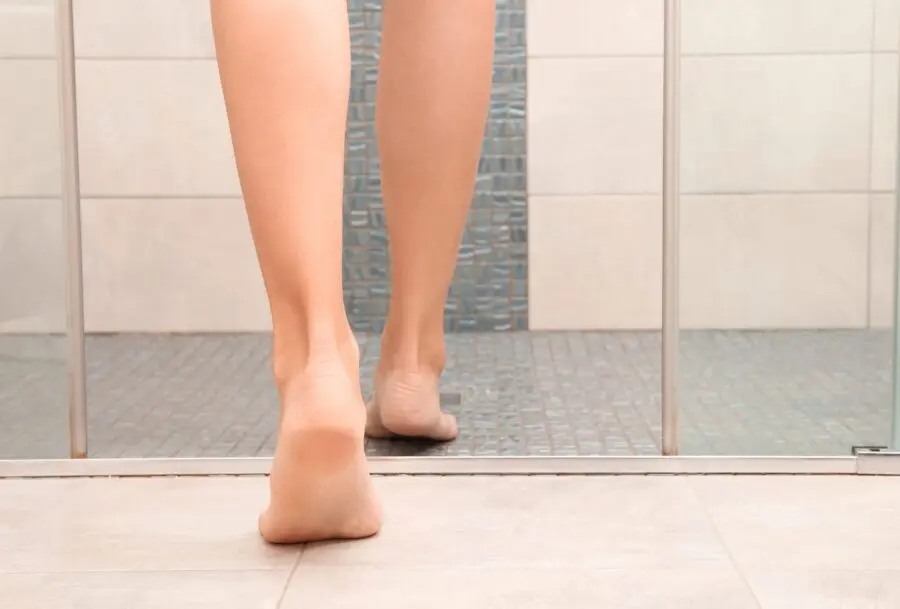
Plantar fibromatosis is a thickening of the aponeurosis tissue in the arch of the foot.
Plantar fibromatosis often manifests as tiny lumps.
Although it is typically harmless, it can cause pain when walking and can make it difficult to move.
It’s critical to understand the signs in order to detect it before it becomes a serious issue.
The following are the symptoms and treatments for plantar fibromatosis.
Plantar fibromatosis symptoms and consequences
Plantar fibromatosis, which mostly affects the arch of the foot, is considered benign until proven otherwise.
It is commonly linked to the following symptoms:
- A hard growth in the arch of the foot that may stay the same size or expand
- Other protrusions identical to the first one forming beneath the foot
- Walking pain might occur in various circumstances (with or without shoes)
Fibrosis, while not extremely limiting, can lead to a multitude of problems if left untreated.
We can consider, for example:
- Retraction of the plantar fascia creating plantar fasciitis
- More rarely, claw or hammer toes
- A varus deviation of the foot
- Difficulties in putting on footwear
- Muscle compensation that causes a change in posture
Causes and aggravating factors
Plantar fibromatosis, also known as Ledderhose disease, has no well-defined etiology in the scientific community.
However, some experts believe that plantar fibromatosis is caused by a lack of plantar fascia repair.
Plantar fibromatosis can be influenced by a number of factors, including:
- Heredity
- Diabetes
- The use of certain medications
- Prolonged immobilization of the foot
- Trauma to the foot such as a tear or elongation of the plantar fascia
- The practice of a sport or an activity that causes repeated microtrauma to the plantar fascia
If the condition progresses, it is suggested that you seek medical advice to avoid any complications.
Preventing plantar fibromatosis
Implementing preventative measures might be difficult due to the unexpected and benign character of Ledderhose disease.
The following measures, on the other hand, can assist to minimize its occurrence:
- Wearing footwear that is adequately suited to the foot’s size and features
- Light to moderate exertion on a regular basis
- Keeping a healthy weight and eating a well-balanced diet
- Implementing a calves-focused stretching routine to help alleviate tension in the leg’s posterior muscle chain
If the aforementioned measures fail to keep plantar fibromatosis at bay, your podiatrist should be consulted.
He or she will be able to diagnose plantar fibromatosis and provide the best medical treatment for the condition.
Diagnosing plantar fibromatosis
As we’ve seen, plantar fibromatosis is often difficult to detect, making diagnosis more challenging.
Nonetheless, the podiatrist has tools and procedures to differentiate it from other diseases that have similar symptoms.
Plantar fibromatosis is diagnosed using a variety of diagnostic tests:
- Biomechanical exam: this form of examination allows for both visual and palpation of the foot to look for abnormal growths.
- Ultrasound of the foot: this procedure allows masses of flesh on the fascia of the foot to be located more easily.
Medical treatments for plantar fibromatosis
The number of therapies dedicated to this disease is fairly restricted because it produces little discomfort.
However, if the pain produced by the fibrous nodules is too much to bear, the following therapeutic options can help:
- Prescription of custom-made foot orthotics: these reduce the impact of the nodules under the foot while walking
- Cortisone treatment: often administered in the form of a cortisone injection, this type of treatment method aims to reduce the inflammation and the size of the bumps that cause pain
Surgery is only necessary in rare cases.
Aponeurotomy may be considered if the patient is in extreme pain or has substantial functional difficulties.
The aponeurotomy entails partly or fully removing the troublesome plantar fascia. This therapy is only done in severe instances since it necessitates rehabilitation.
PiedReseau – Learn more
Do you want to learn more about plantar fibromatosis? There are a lot of articles on plantar problems that we post!
Despite the fact that the PiedReseau website contains useful information, nothing matches an actual visit to a podiatrist.
Take care of your feet, they’re precious!